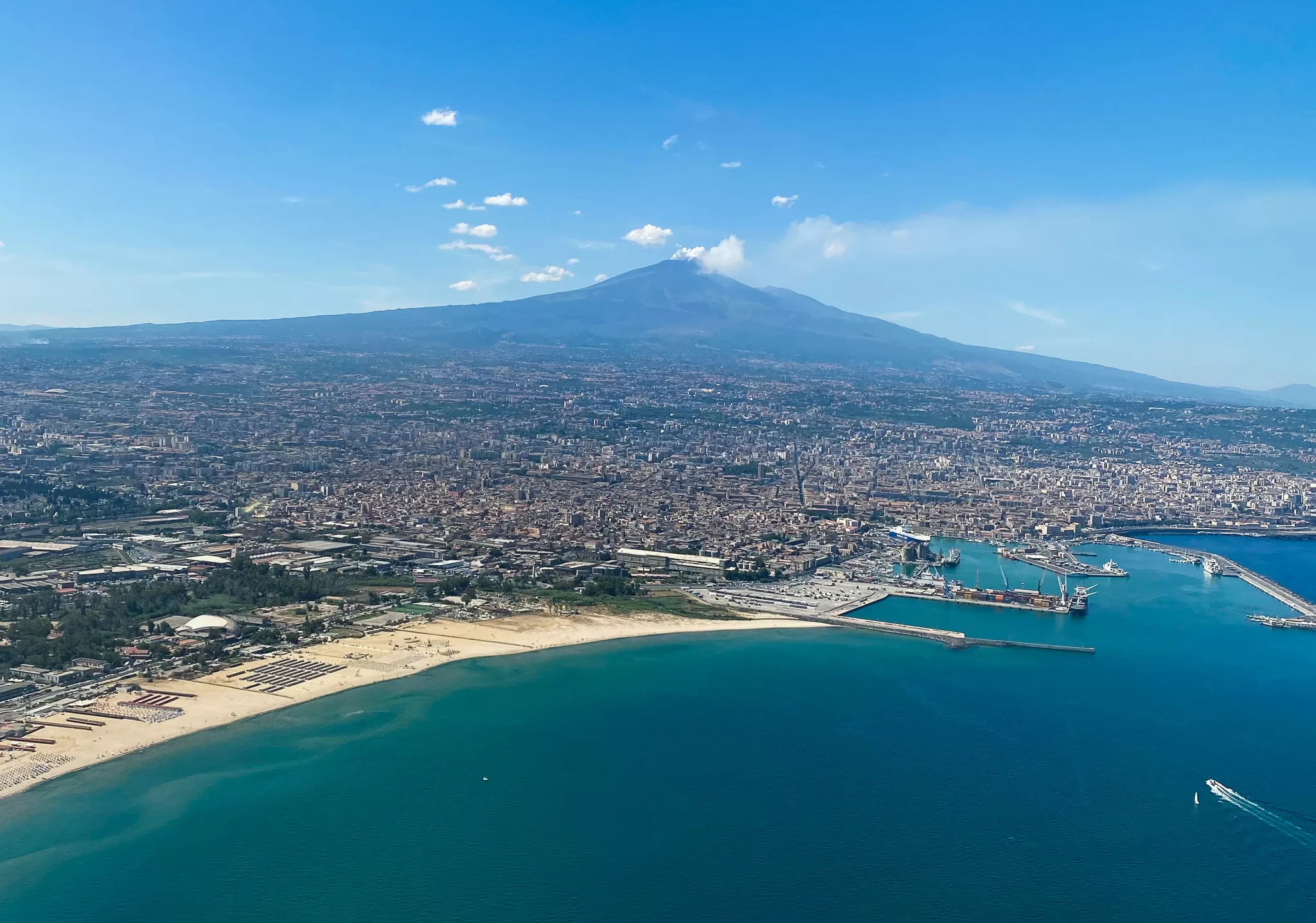About Catania
For all its noise, chaos and scruffiness that hit the visitor at first glance, Catania has energy to sell and a beautiful, Unesco-listed historic centre. Grandiose black-and-white palazzi tower over baroque piazzas and the city has one of the most vibrant fish markets on the island, together with hundreds of bars, clubs and eateries that cater to the city's fun-loving (largely student) population.

credit: Jessie Torres (<== follow the link to his blog on things to see in one day in Catania).
All the while, Mt Etna broods on the horizon, its powerful presence adding a thrilling edge – and a beautiful backdrop – to Sicily's second-largest city.
Catania, or Katane as it was once called, was originally founded by the Chalcidians in 729 BC, growing to become a major regional power in the 4th and 5th centuries BC. In subsequent centuries it was ruled by a succession of foreign powers, first the Romans, then the Byzantines, Saracens and Normans, but by the mid-17th century it had once again become a prosperous commercial centre.
Then, in the late 1600s, disaster struck. Twice. Etna's most destructive eruption since 122 BC started on 11 March 1669 and produced lava flows that destroyed at least 10 villages on its southern flank before reaching the city walls of the town of Catania five weeks later, on 15 April.
The lava was largely diverted by these walls into the sea to the south of the city, filling the harbour of Catania. A small portion of lava eventually broke through a fragile section of the city walls on the western side of Catania and destroyed a few buildings before stopping in the rear of the Benedictine monastery, without reaching the centre of the town. Contrary to widespread reports of up to 15,000 (or even 20,000) human fatalities caused by the lava, contemporaneous accounts written both in Italian and English mention no deaths related to the 1669 eruption (but give very precise figures of the number of buildings destroyed, the area of cultivated land lost, and the economic damage), so it can be safely assumed that the enormous number of fatalities often picked up also by the news media must be a confusion with the earthquake that devastated southeast Sicily (including Catania) 24 years later, in 1693. A study on the damage and fatalities caused by eruptions of Etna in historical times reveals that only 77 human deaths are attributable with certainty to eruptions of Etna, most recently in 1987 when two tourists were killed by a sudden explosion near the summit.
Then, in 1693, a huge earthquake hit leaving a further 20,000 people dead. But out of the ashes arose the city that stands today. Under the supervision of architects Giovanni Vaccarini and Stefano Ittar, a new street grid was created incorporating spacious squares and streets of differing widths, all designed to provide escape routes and greater shelter in case of another eruption. Grandiose palazzi and churches were built in baroque style out of the black volcanic rock that Etna had rained on the city.
In modern times, years of neglect left many of the city's great buildings on the verge of decay but renovations in the early 2000s restored many of them to their former glory.
More information on Catania are provided in the proposed Tour of the Sicilian East Cost.

